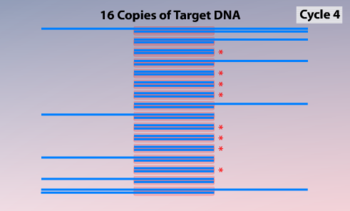Polymerase Chain Reaction (PCR)
PCR is a technique that is used to amplify a single copy of a target sequence into billions of identical copies (a geneticist’s photocopier).
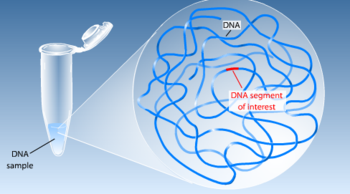
1) A sample containing the DNA sequence of interest must be isolated. This is often done using restriction enzymes, gel electrophoresis and probes.
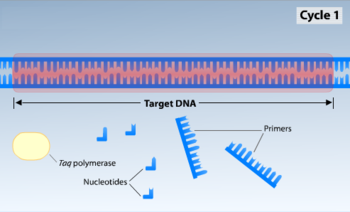
2) We will also need free DNA nucleotides, DNA primers (short sequences ~20bp long) & Taq Polymerase (a DNA polymerase that can withstand high temp, isolated from bacteria found in hot-springs).
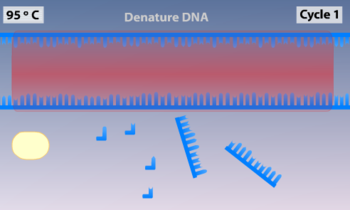
3) The DNA is heated to 95°C separating the double stranded DNA so that the base sequences are exposed.
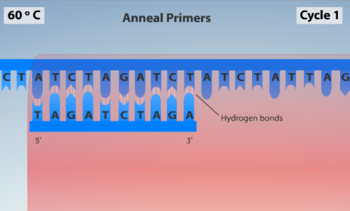
4) Next the DNA is cooled to 65°C. DNA primers can now form hydrogen bonds, or anneal with their complementary sequences on either side of our target DNA.
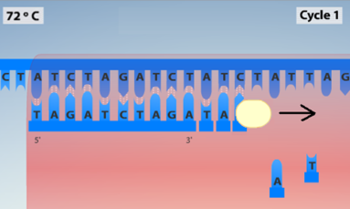
5) The solution is then heated to 72°C. This is the optimum temperature of Taq Polymerase. Starting from the DNA primers Taq Polymerase will use free nucleotides to synthesize the complimentary sequence of each strand.

This is the end of the first cycle, resulting in two copies of our original target sequence (highlighted).
Subsequent cycles will double the number of our target sequence each time:


